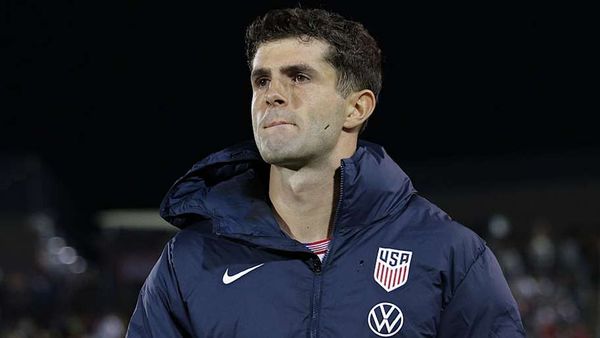
In the 25 years that Paul Campbell-Allen has been involved in searching for people missing in the Australian bush, he has never been part of a search that has gone for as long as the one for Hadi Nazari and that resulted in someone being found alive.
“The longest one that I’ve done with BSAR” – NSW State Emergency Service bush search and rescue, of which he is unit commander – “was 18 days. And we’ve had a couple which have been similar sort of length [as the 13-day search for Nazari]. In those previous cases, though, there was no find [of either a survivor or a body], so the difference on this one was there was a find, which was just fantastic.”
Nazari, a 23-year-old medical student from Victoria, had been hiking with some friends in the Kosciuszko national park over the Christmas break.
On Boxing Day, he had gone off alone to take some photographs but did not meet up with his friends as planned at the Geehi campsite. A multi-agency rescue mission, which would eventually involve more than 300 searchers, began and 13 days later Nazari was found, stumbling into a group of hikers about 10km from where he had last been seen.
Nazari was dehydrated and hungry – he had survived on berries and two muesli bars, which had been left in a hut by another hiker – but had no obvious injuries and was discharged from the nearby Cooma hospital less than 48 hours after being found.
Campbell-Allen was there – at the command post at Geehi Flats campground in the Kosciuszko national park, seven hours’ drive from Sydney – when the helicopter landed and Nazari disembarked.
“It was fantastic. He got out of the aircraft and everyone just clapped. It was marvellous … I mean, that’s why we’re there, really. When you get results like that – he’s found. That’s why we were all doing it.”
The search effort involved multiple agencies supporting the NSW police, including the SES alpine search and rescue, Victorian bush search and rescue, as well as various teams from the NSW SES. “The cooperation between them was actually outstanding,” Campbell-Allen says.
The SES deployed 81 teams into the field, representing 207 volunteer field days. The specialist BSAR team, which Campbell-Allen helps coordinate, deployed 18 teams, who between them contributed 70 person days.
It was one of these BSAR teams that made the gamechanging discovery on 5 January of Nazari’s camera and an old campfire. Campbell-Allen says the find left everyone buzzing.
“Getting a find like that when you’re working in that sort of terrain is really exciting … and I think it gave everyone a real kind of boost to keep going and hopefully to find him alive.”
Campbell-Allen says searchers had been hopeful throughout of a good outcome, because Hazari was likely to have plentiful access to creek water and because temperatures during the time he was missing did not plummet too drastically overnight.
“As long as he had access to water, which was the key thing there, and if he hadn’t been bitten by a snake or something like that, then there was a very good chance that he would be alive.”
Added to this was the fact that Hazari was young, fit and an experienced hiker who was familiar with the area, all of which increased his chances of survival.
Working against him, though, was the terrain.
“It’s very, very dense bush,” Campbell-Allen says. “The vertical ascent there is over one-and-a-half vertical kilometres, and it’s just very hard. Once you’re off the track, then it’s almost impossible to see anyone. The tree ferns are as high as a person.”
Searching in that bushland is incredibly difficult. “Once you get down into the forested area, it gets very dense and very steep, with a lot of creeks running into deep ravines, waterfalls, all that sort of thing. Which means that if someone’s down in one of those, you pretty well have to be on top of them to see them.
“So it makes searching very difficult and very time-consuming.”
‘Stay put and make yourself visible’
For hikers wondering how best to survive if they become lost in the Australian bush, Campbell-Allen suggests people should stay put rather than try to navigate their way out.
“So the most important thing is to stay put and make yourself visible,” he says. “If you’ve got bright clothing and you stay put, then there’s a much higher chance of being found.
“The other thing is that when you are being looked for by helicopters or by drones, people are very hard to see if they’re absolutely still. So if you’re sitting there, particularly in that sort of dense environment, you’re very hard to spot from the air. It helps if you move to short distances, maybe 10 metres or something, up and down, because human beings are very good at picking movement.”
Carrying a personal locator beacon (PLB), which sends coordinates of your location to emergency and rescue services when a distress button is pressed, is “probably the best thing you can have”, Campbell-Allen says. They retail for a few hundred dollars and can sometimes be borrowed from national parks services.
“I’ve only had to use a PLB twice but in both situations it was just invaluable. Once with a very serious injury down in Tasmania on the South Coast track with one of our members … They were basically saved because of it, or at least permanent damage to them was [prevented] by being able to use the PLB and I’ve had to use it personally once as well.”
After being found, Nazari released a statement thanking the rescuers and volunteers. “I would like to thank everyone who has wished me well in my recovery, and prayed for me,” he said. “I am very grateful for the rescuers and volunteers involved in searching for me, may God bless them all. I cannot thank everyone enough.”
For Campbell-Allen, the fact that so many people volunteered their time – many taking leave from work or potentially missing summer holidays – to find one person made him proud.
“In Australia, it’s one of the few countries in the world where an individual gets lost and you’ll have hundreds of people looking for you. And I’ve worked in different parts of the world where you’d be lucky to have anybody looking for you.
“It’s something about the Australian character, I think, that thinks it’s important to be looking for individuals who get lost for whatever reason, and it’s a fantastic place to live for that reason.”







